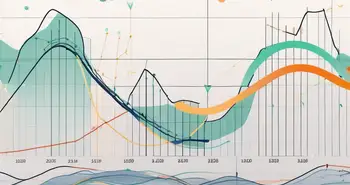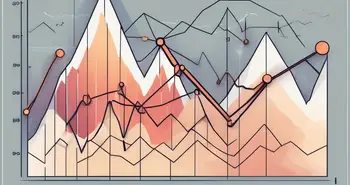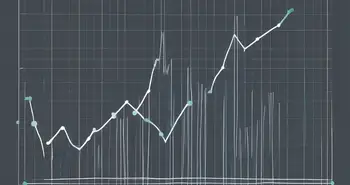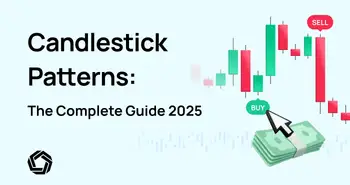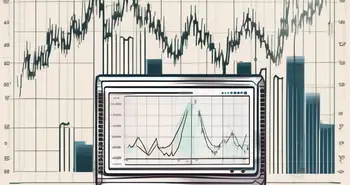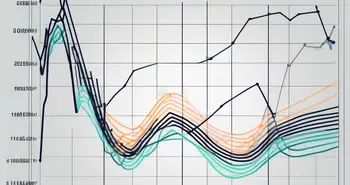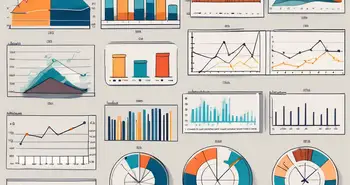Article Contents
Top 5 Indicators for Candlestick Pattern Strategies

Welcome to our blog post on the 5 essential technical indicators that can enhance your candlestick pattern strategies. Technical indicators are powerful tools that can provide valuable insights into market trends and help traders make informed decisions. By combining these indicators with candlestick patterns, you can gain a deeper understanding of market dynamics and improve your trading strategies. In this article, we will explore five key technical indicators: Moving Average, RSI, MACD, Bollinger Bands, and Stochastic Oscillator.
1. Moving Average
The Moving Average (MA) is a widely used technical indicator that helps traders identify trends and potential entry or exit points. It calculates the average price of an asset over a specific period, smoothing out price fluctuations and providing a clearer picture of the overall trend. There are different types of moving averages, such as the Simple Moving Average (SMA) and the Exponential Moving Average (EMA).
The SMA is calculated by adding up the closing prices over a specific period and dividing it by the number of periods. It is easy to calculate and provides a reliable representation of the overall trend. On the other hand, the EMA gives more weight to recent prices, making it more responsive to market changes.
Using Moving Average to Identify Trends
One of the primary uses of the moving average is to identify trends. By plotting the moving average on a price chart, you can easily determine whether the market is in an uptrend, downtrend, or ranging. When the price is consistently above the moving average, it indicates an uptrend, while a price below the moving average suggests a downtrend. Traders often look for opportunities to enter trades in the direction of the trend.
Using Moving Average as Support and Resistance
Another way to use the moving average is to identify potential support and resistance levels. In an uptrend, the moving average can act as a support level, where the price bounces off and continues its upward movement. Conversely, in a downtrend, the moving average can act as a resistance level, preventing the price from moving higher. Traders often use these levels to set their stop-loss orders or take-profit targets.
2. RSI
The Relative Strength Index (RSI) is a momentum oscillator that measures the speed and change of price movements. It oscillates between 0 and 100 and is used to identify overbought and oversold conditions in the market. The RSI is calculated based on the average gain and average loss over a specific period, typically 14 periods.
Identifying Overbought and Oversold Conditions
Traders use the RSI to identify overbought and oversold conditions, which can indicate potential reversals in the market. When the RSI is above 70, it suggests that the market is overbought, and a price correction or reversal may occur. Conversely, when the RSI is below 30, it indicates that the market is oversold, and a price bounce or reversal may happen. Traders often look for divergences between the RSI and price to confirm these signals.
Using RSI for Divergence Trading
Divergence occurs when the price and the RSI move in opposite directions. Bullish divergence happens when the price makes lower lows, but the RSI makes higher lows, indicating a potential bullish reversal. On the other hand, bearish divergence occurs when the price makes higher highs, but the RSI makes lower highs, suggesting a potential bearish reversal. Traders often use these divergences as a signal to enter or exit trades.
3. MACD
The Moving Average Convergence Divergence (MACD) is a trend-following momentum indicator that shows the relationship between two moving averages of an asset's price. It consists of three components: the MACD line, the signal line, and the histogram. The MACD line is calculated by subtracting the longer-term moving average from the shorter-term moving average, while the signal line is a moving average of the MACD line.
Identifying Trend Reversals with MACD
Traders use the MACD to identify potential trend reversals. When the MACD line crosses above the signal line, it generates a bullish signal, indicating a potential uptrend. Conversely, when the MACD line crosses below the signal line, it generates a bearish signal, suggesting a potential downtrend. Traders often wait for these crossover signals to confirm their trading decisions.
Using MACD Histogram for Momentum Confirmation
The MACD histogram represents the difference between the MACD line and the signal line. It provides additional information about the strength of the trend. When the histogram bars are above the zero line, it indicates bullish momentum, while bars below the zero line suggest bearish momentum. Traders often use the histogram to confirm the strength of the trend and make more informed trading decisions.
4. Bollinger Bands
Bollinger Bands are a volatility indicator that consists of a middle band, an upper band, and a lower band. The middle band is typically a simple moving average, while the upper and lower bands are calculated based on the standard deviation of the price. Bollinger Bands expand and contract based on market volatility.
Identifying Volatility Squeeze with Bollinger Bands
When the Bollinger Bands contract, it suggests low volatility in the market, often referred to as a volatility squeeze. Traders anticipate that this period of low volatility will be followed by a significant price movement. They use this information to prepare for potential breakouts or breakdowns and adjust their trading strategies accordingly.
Using Bollinger Bands for Support and Resistance
The upper and lower bands of the Bollinger Bands can act as dynamic support and resistance levels. When the price touches the upper band, it suggests that the market is overbought, and a price reversal or correction may occur. Conversely, when the price touches the lower band, it indicates that the market is oversold, and a price bounce or reversal may happen. Traders often use these levels to set their stop-loss orders or take-profit targets.
5. Stochastic Oscillator
The Stochastic Oscillator is a momentum indicator that compares the closing price of an asset to its price range over a specific period. It oscillates between 0 and 100 and is used to identify overbought and oversold conditions in the market. The Stochastic Oscillator consists of two lines: %K and %D.
Identifying Overbought and Oversold Conditions with Stochastic Oscillator
Traders use the Stochastic Oscillator to identify overbought and oversold conditions, similar to the RSI. When the %K line crosses above the %D line and moves above 80, it suggests that the market is overbought. Conversely, when the %K line crosses below the %D line and moves below 20, it indicates that the market is oversold. Traders often look for divergences between the Stochastic Oscillator and price to confirm these signals.
Using Stochastic Oscillator for Crossover Signals
Crossover signals can also be generated by the Stochastic Oscillator. When the %K line crosses above the %D line, it generates a bullish signal, indicating a potential uptrend. Conversely, when the %K line crosses below the %D line, it generates a bearish signal, suggesting a potential downtrend. Traders often wait for these crossover signals to confirm their trading decisions.
By incorporating these five essential technical indicators into your candlestick pattern strategies, you can enhance your trading skills and increase your chances of success in the financial markets. Remember to practice and experiment with different combinations of indicators to find the ones that work best for your trading style and preferences. Happy trading!
Ready to take your candlestick pattern strategies to the next level with Morpher? Experience a revolutionary trading platform that harnesses blockchain technology to offer you zero fees, infinite liquidity, and the flexibility of fractional investing. Whether you're looking to trade stocks, cryptocurrencies, or even unique markets like NFTs, Morpher provides the tools you need for a superior trading experience. With features like 10x leverage and the safety of a non-custodial wallet, Morpher is designed to empower traders like you. Sign Up and Get Your Free Sign Up Bonus today to start trading on a platform that's as innovative as your trading strategies!

Disclaimer: All investments involve risk, and the past performance of a security, industry, sector, market, financial product, trading strategy, or individual’s trading does not guarantee future results or returns. Investors are fully responsible for any investment decisions they make. Such decisions should be based solely on an evaluation of their financial circumstances, investment objectives, risk tolerance, and liquidity needs. This post does not constitute investment advice.

Painless trading for everyone
Hundreds of markets all in one place - Apple, Bitcoin, Gold, Watches, NFTs, Sneakers and so much more.

Painless trading for everyone
Hundreds of markets all in one place - Apple, Bitcoin, Gold, Watches, NFTs, Sneakers and so much more.

